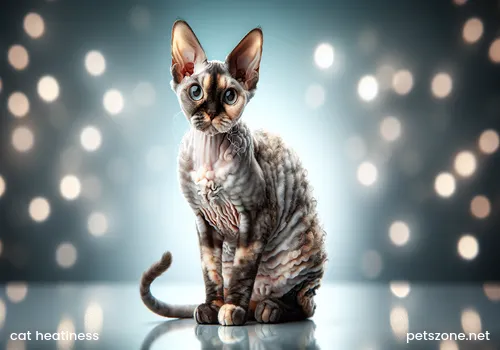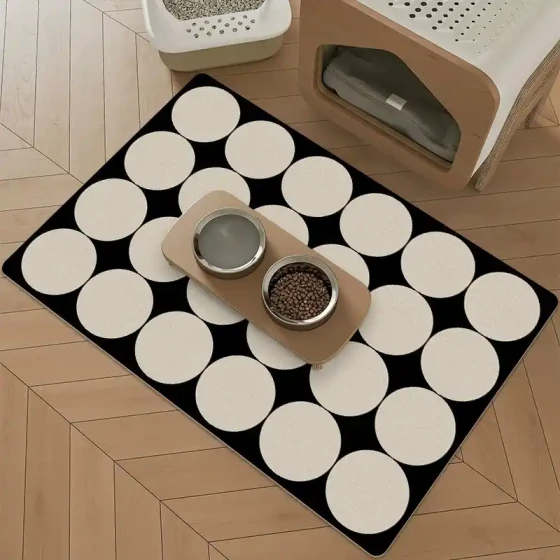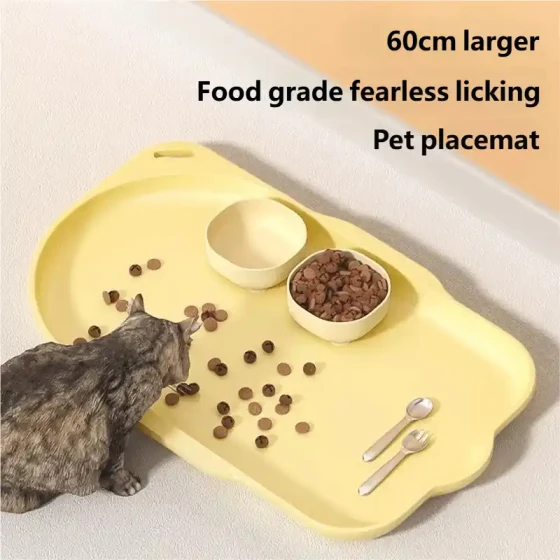How to Solve Cat Heatiness_Rapid Comprehensive Guide to Reduce Heatiness
Has your cat been acting a bit off recently? Is there unknown discharge at the corners of its eyes, a dry nose, breath that smells as if it just gnawed on a rotten rat, or even "tough" poop? Congratulations, you might have encountered the legendary "cat heatiness." This term sounds quite mystical, as if applying traditional Chinese medicine theory to cats, but beyond these somewhat mysterious words, it actually hides some common signals closely related to cat health.
The core to quickly resolving a cat's "heatiness": Ultimately it's about adjusting diet and increasing water intake while monitoring potential health issues and seeking professional veterinary help when necessary.

Don’t treat "heatiness" as a cure-all; it is more like a broad term covering a series of symptoms that may be caused by internal "imbalances"—such as insufficient hydration, improper diet, or excessive stress. Imagine, cats are elegant hunters that come from desert environments and naturally have a "zen" approach to water, mainly obtaining moisture from their prey. Once the food is too dry, the environment lacks water, or the body encounters some issues, these "heatiness" symptoms may appear.
Let's consider common signs of cat "heatiness," work backward to uncover the underlying truth, and offer corresponding solutions.
1. Typical Symptoms of "Heatiness": Looking Beyond the Surface
When you observe the following, it might be time to be cautious about "heatiness":
- Increased eye discharge, obvious tear stains: Clear or slightly yellow secretions, sometimes even hardening. This could indicate inflammation, allergy, or just a sign of dehydration.
- Dry or even cracked nose tip: A healthy cat's nose is usually moist and cool. Dryness may indicate dehydration or abnormal body temperature.
- Bad breath: Besides dental issues, indigestion or insufficient internal hydration can also cause bad breath.
- Constipation or hard stools: One of the clearest signals, often related to lack of dietary fiber and insufficient water intake.
- Poor appetite or picky eating: Causes are complex, but sometimes discomfort or digestive system issues manifest as reduced appetite.
- Decreased energy, increased sleepiness: Some degree of dehydration or discomfort can make cats lethargic.
These symptoms might not be serious if appearing individually, but if several occur together or persist without relief, it’s time to be extra vigilant.
2. Tackling the Root Cause: Solving the "Heatiness" Problem
Since "heatiness" is just the surface, we must find the deep causes behind these manifestations and then apply targeted remedies.
- Insufficient hydration is the top priority!
- Change the approach to giving water: Cats naturally show little interest in stagnant water. Try using flowing water devices, like pet water fountains; running water attracts them more.
- Multiply drinking points: Place several water bowls around the house, especially in places your cat frequently passes or likes to stay. Vary materials and shapes to see which your cat prefers. Ceramic and glass bowls are less likely to harbor dirt and are safer than plastic.
- Wet food is great: Dry cat food usually contains less than 10% moisture, while wet food (canned or pouches) contains 70-80%. This is the simplest and most effective way to increase water intake. If your cat normally eats only dry food, you can gradually transition to wet food or mix dry food with warm water (don’t soak too long to avoid bacteria growth). Studies have shown that long-term wet food feeding helps reduce urinary tract disease risk; in the long run, this is a wise "preventive" strategy.
- Adjust the dietary structure
- Balance protein and fat: Ensure the cat food is a high-quality animal protein source, matching the cat’s carnivorous nature.
- Proper dietary fiber: Some cat foods include moderate fiber levels to promote intestinal motility and relieve constipation. Excessive fiber, however, can interfere with nutrient absorption, so balance is key.
- Avoid single, overly dry foods: Feeding only one very dry cat food, especially if of ordinary quality, for a long time is more likely to cause "heatiness" symptoms.
- Probiotics support: Gut health is foundational for a cat’s overall health. Supplementing with pet-specific probiotics in moderation helps balance gut flora, improves digestion and absorption, and indirectly alleviates "heatiness" caused by digestive issues. Just like in humans, a healthy gut means fewer minor issues.
- Manage stress and environment
- Provide security: Cats are territorial animals; sudden environmental changes, new household members (human or other pets), or even renovation noise can cause stress. Providing ample hiding spaces and high platforms, and maintaining a stable familiar environment, effectively reduces stress.
- Increase interaction: Spend time daily playing with your cat using toys like teaser wands to expend their energy and release natural instincts, helping to ease anxiety and boredom-induced stress.
- Other possible auxiliary measures
- Cat grass or hairball paste: Helps cats expel hairballs, reducing digestive discomfort caused by hair accumulation.
- Some traditionally "heat-reducing" foods: Some people try feeding small amounts of cooked boneless, skinless chicken breast, fish (pay attention to cooking without seasoning), or pet-specific goat milk powder. These foods have high moisture content and are easy to digest, potentially helping alleviate symptoms. But remember, a cat’s staple diet must be balanced cat food; these are only supplements.
- Pet-specific nutritional supplements: Under veterinary guidance, some supplements aimed at skin, eye, or gut health may be used.
3. When to "Call for Backup": Don’t Tough It Out, Hurry to the Hospital!
Key point! All the previously mentioned methods are based on the relatively broad concept of "cat heatiness" for home care. But if your cat’s symptoms persist without improvement or worsen, such as:
- No bowel movement for a long time (more than 2-3 days) or severe difficulty defecating.
- Large amounts of purulent discharge from eyes or nose.
- Lethargy and complete loss of appetite.
- Severe vomiting or diarrhea.
- Abnormal body temperature (too high or too low).
These cannot be simply attributed to "heatiness" and may signal more serious underlying diseases, such as:
- Urinary system problems (urinary stones, cystitis, especially in male cats!).
- Respiratory infections.
- Oral diseases.
- Digestive tract diseases.
- Even some systemic diseases.
At this point, what you need is not to continue home remedies for "heatiness," but to take your cat to a professional veterinarian promptly. The vet will conduct thorough exams, lab tests, and even imaging to identify the true cause and provide scientific treatment plans. Don’t delay the best treatment opportunity due to believing misinformation or self-treatment assumptions. Remember, veterinarians are the last line of defense for protecting your cat’s health.
Final words
The term "cat heatiness" is less a medical diagnosis and more a generalization of a series of symptoms possibly related to fluid balance, digestion, and environmental imbalance. It reminds us to pay attention to our cat’s daily diet, hydration, elimination, and mental state. Solving "heatiness" isn’t a mystical ritual but a return to common sense: provide plenty of clean water, choose high-quality, moisture-rich food, and create a stable, comfortable living environment. At the same time, stay alert and seek professional medical help without hesitation if symptoms persist or worsen. After all, we want our cats energetic and vibrant every day, not lethargic and "heaty." This is the truly practical and loving way to care for cats.
References:
- Veterinary research reports on the importance of cat hydration
- Domestic and international pet nutrition experts’ recommendations on feline diet
- Care guides for cats published by institutions like Cornell University College of Veterinary Medicine



